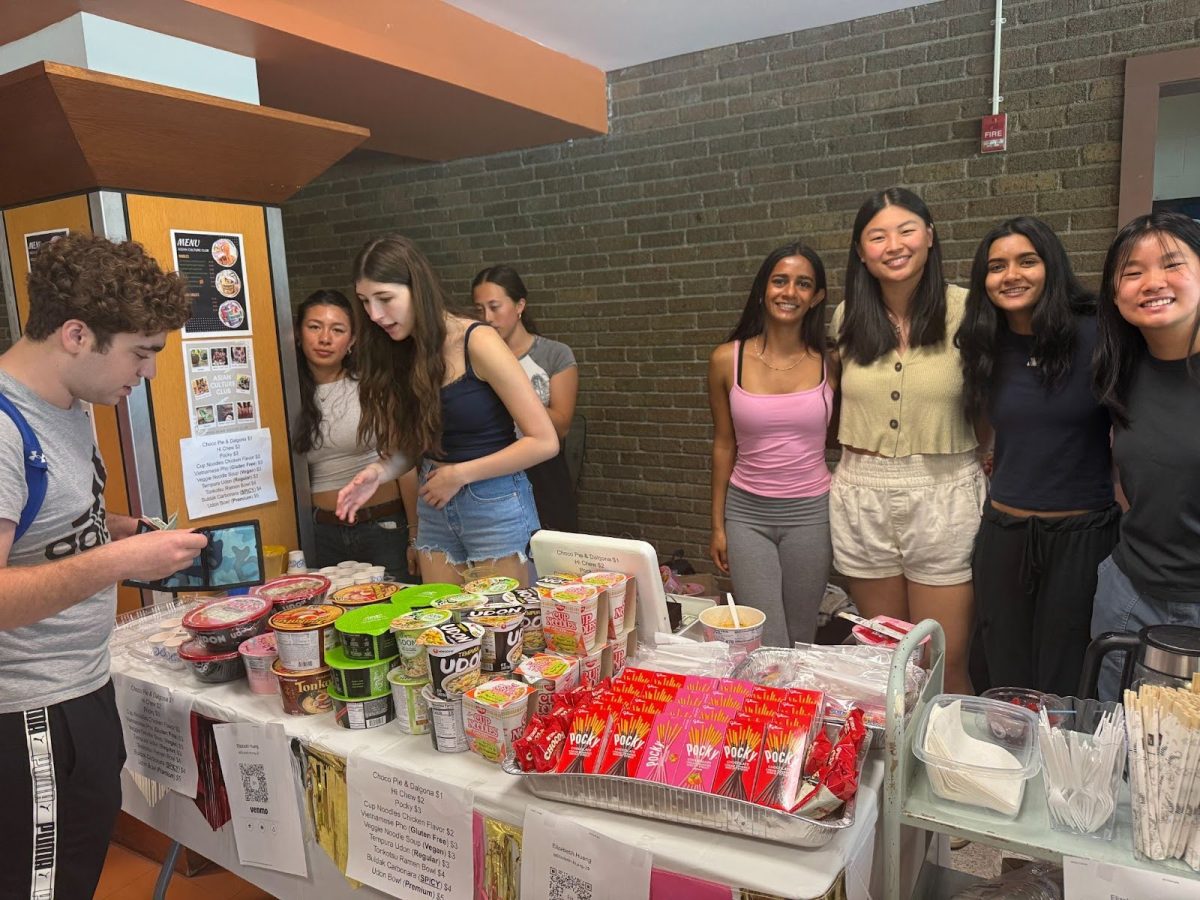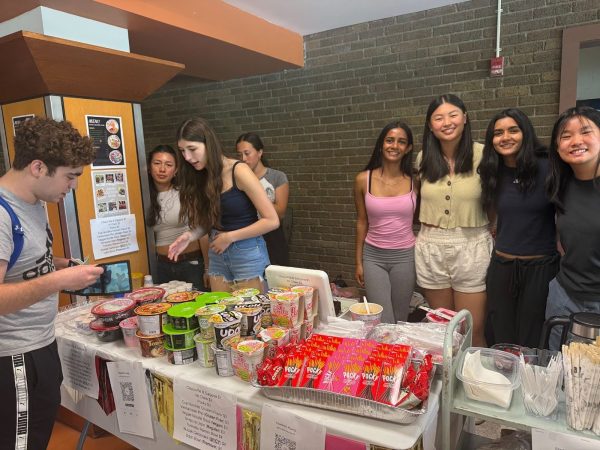Adjusting To School In America
By Sofia Papadopoulos
On the first day of school, freshman Carmen Roozen walked into a brand new high school. She walked from period one to two, up and down wings A and B, trying to figure her way around a new school. She sat in her seat and learned the name of those sitting around her, as she was taking in the new environment.
The difference between her first day and the one you are imagining is that Roozen had just moved to the United States from the Netherlands, due to new job opportunities for her dad, knowing only a small amount of English.
With “Hills Pride” all around, Roozen did not know what to expect in the next four years.“I was actually excited, but I was also sad because I was leaving my friends behind. I was very excited, though, because I would be in a country learning new stuff.”
Roozen’s time in America has been a short four months. She expressed that school was one of the biggest worries she had about moving; “Like with friends,” Roozen said, “that I wouldn’t have any friends and wouldn’t understand the things that they say.”
Life in the Netherlands is different than here in Jersey. Even small things such as transportation and weekend plans proved to be different for Roozen, “On the weekends we would hang out at each other’s houses, bike and eat somewhere, go to the city, hang out at playgrounds, go shopping or go to the movies. In New Jersey you have to do everything with a car, and in the Netherlands you could just walk or bike to the subway and go to the city, or bike there yourself. There are no sidewalks here and that was a big change.”
Though Roozen was speaking Dutch when in the Netherlands, she did have slang that translated to popular American slang. She explained, “When we were planning to go to a party we always said, ‘Het word sws gaande’ that means ‘It’s going to be lit.’ When we wanted to hangout with each other we said, ‘Wil je iets doen?’ that means ‘Do you want to hangout?’ The style in the Netherlands is more sophisticated than here.”
Another cultural difference is in style and presentation. “Girls didn’t come to school in sweatpants, you were allowed to, but nobody did it. The girls would wear jeans, dresses or skirts. You could choose your own clothes, but there were strict rules, nobody should be able to see your belly or shoulders during gym and school hours. The boys would wear training suits, for example the ones from Barcelona soccer.”
There were also differences Roozen was able to see in Hills from what she was used to having at school; “The way the teachers do the class [teach their lessons] was different. In the Netherlands the relationships with your teachers were only ‘Here’s your homework, go do it’ and ‘I don’t care why you didn’t do it, but you didn’t make it [the due date], so it’s wrong.’ But, here the teachers really care and aren’t like that.”
Roozen had explained the moment when school became easier on her socially. “I think the point where I realized that this was easier was when I became friends with Izabel [Marte, freshman],” Roozen said, “it was like: ‘Okay, I have a friend, I can do this. I’m not alone, and I can do this.’”
Marte, one of Roozen’s first friends in America, said, “She’s getting really used to school over here, like she’s understanding it, and she is able to see the differences from the Netherlands. She talks more and I have seen her comfort level grow just in these few months.”
Roozen’s ability to speak has progressed through just four months of being surrounded by all English speakers. Roozen was taught English as a subject at her old school, so she did know some words and phrases. Roozen said, “In the beginning, I was really bad at talking, like conversational, so I didn’t really know how to talk. Now it really has grown, it’s not that good, but it’s better.”
The language barrier did prove to be a struggle at first: “You want to talk,” Roozen said, “but you don’t really know how to. It was weird [to have to go through]. It was difficult. I really didn’t want to go to school because most of the things you didn’t understand, and you didn’t know how to talk, so now you just need to stay there not understanding things being like, ‘What’s going on?’” She said, “Most of the time when I want to communicate and I can’t or I don’t, is usually when I’m in class. I know the answer and want to say it, but I’m just scared to. I was already shy and scared to stand in front of the class in the Netherlands, but when I came to America it only became worse, and I think it’s because of the language barrier.”
She went on and explained the struggle other students don’t see. “At the beginning, it felt like a day lasted a whole week. I hated school. Not because of the homework or kids, but because of how stupid I felt sitting in class and not understanding a thing. I had to ask the teacher about every little thing, and I’m the kind of person who wants to figure things out for themselves. From the outside it looks so cool and adventurous, but the reality is, it’s hard and difficult and you have to make a lot of changes.”
Hills offers a class to students that speak English as a second language called ESL. Roozen said, “I am most thankful for having my class, ESL, because the teacher really helps me with understanding things and it is pretty helpful.”
ESL teacher Christine Gorman said, “I think when they are with me, with the other kids in the class, they have that commonality that they all have their strengths. And it’s that one time that they don’t feel embarrassed to speak, that they are allowed to make mistakes, whereas when they are in a big classroom with twenty-something students they very often aren’t going to raise their hand, they aren’t going to say anything because they don’t want to speak in front of the other students.”














































